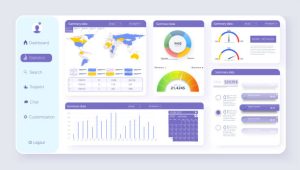Tech is moving faster than an antelope in the hunting season. You know what else? And now it is also a part of journalism. Yep, that’s right. Journalists with AI taking control of keyboards and producing articles like Swiss watches. Does it really all go well? See what’s the big deal. Visit our website and learn more about AI Outreach.
Artificial Intelligence Scribes are not your friendly coworkers. They crunch and analyze data to produce. Like having a coffee-free worker. It’s like they are spreading butter onto toast. They eat mountains of info and then spit it out. Fast and no smudges.
It can, in fact, be a mixed blessing. For example, consistency. AI is never wrong about dates, sources, or citations. It is always perfect. But, in the attempt to achieve perfection, sometimes it comes across as, er, robot. People crave tales which have heartbeats. It is often necessary to program in the subtlety, sarcasm as well as that cheeky nod.
We’ll talk about emotional connections. Imagine you read an article that dealt with a very personal subject, for example the loss or triumph of someone’s beloved pet. A journalist who is human can tap into emotions behind scenes to create a story that will tug at the heartstrings. AI? It’s not so good. While it may simulate empathy, you can tell that the person is not really understanding what’s going on.
And then there’s speed. They can write stories quicker than even a veteran journalist drinking a double-espresso. What’s the latest news? AI will keep you up to date. Get the latest information, straight from the source. Speed can often overshadow verification. Who does the fact-checking? Humans, mate. AI can gather information from credible sources but journalists are the ones who go deeper to uncover layers of data and discover mistakes.
AI, blessed by its circuits, tries now to enter the realm of creating creative content. However, creativity is slippery. Algorithms are good at structure but not abstract thinking. Humans are the ones who create poetry, metaphors, and stories. If you feed it with a lifetime’s experiences, heartbreaks or success, the machine will not become Maya Angelou.
They’re not here to snuff out journalists. They are assistants and do all of the grunt-work. Writers can focus more on the juicy stuff by allowing them to do things like drafting, compiling reports and stats or summarizing. Imagine that a sous-chef is chopping the vegetables for a cook while the chef prepares their meal. This is about working together, complementing each other’s abilities.
Please don’t start me on ethics. AI has become a major part of newsrooms, raising a number of issues. A machine can have bias. What’s the responsibility for misleading information? Is it like eating a hamburger only to find out it contains soy if it’s written by AI? The consumer demands transparency and authenticity. Trust can take years to develop, but it only takes seconds to ruin.
One cool feature of this software is its language versatility. AI can be programmed to speak in many languages. By doing so, it breaks down language barriers. Stories can be told across the globe faster and more efficiently than with a viral video. Cultural nuances, humor, and idioms are lost in the translation process, which can make some works appear wooden.
AI offers a financial benefit to news organizations that have a limited budget. Content automation lowers cost, which is good for budget-conscious news outlets. This cost-effective strategy can be a lifeline to smaller outlets and give them a fighting opportunity. Don’t be all in one basket. The overuse of technology may stifle the human element in journalism and result in bland news.
It’s like integrating AI with journalism involves a delicate balancing act. As an artist applies paint carefully, the combination of machine precision and human insight creates masterpieces. There is harmony in a world of data-driven content and heartfelt storytelling.
What happens when a computer meets an editor, you ask? The two are like dance partners, where the one performs flawlessly without rhythm but the other has jazz in his bones. It’s a duo where one partner is a flawless performer without rhythm, while the other has jazz in their bones.
